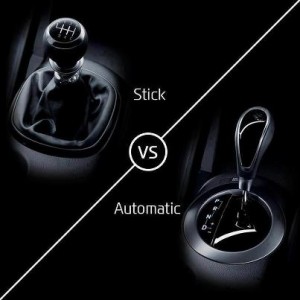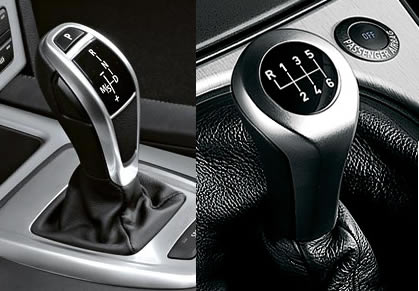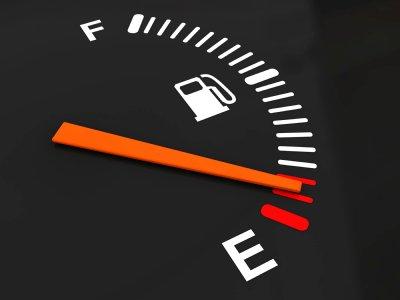Things To Consider When Buying A Manual Or Automatic Car

A new car is a huge decision, especially if you are unsure about whether you want one with a manual or automatic transmission. The most important thing is to educate yourself beforehand, in order to understand the differences between the two. Then you can decide which transmission type best suits your needs.
For some helpful information on the pros and cons of both manual and automatic transmission cars follow the steps.
1. Understand the basics.
Just like that of a manual transmission, the automatic transmission’s primary job is to allow the engine to operate in its narrow range of speeds while providing a wide range of output speeds. Without a transmission, cars would be limited to one gear ratio, and that ratio would have to be selected to allow the car to travel at the desired top speed. If you wanted a top speed of 80 mph (130 km/h elsewhere), then the gear ratio would be similar to fourth gear in most manual transmission cars. You’ve probably never tried driving a manual transmission car using only fourth gear. If you did, you would quickly find out that you had almost no acceleration when starting out, and at high speeds, the engine would be screaming along near red line. A car like this would wear out very quickly and would not be drive-able.
2. Consider power.
If you want the most power from your engine, going with a manual transmission versus an automatic is most likely going to be your best bet. While some modern automatic transmissions, i.e. CVT transmissions, manumatics, and conventional 4 or 5-speed automatic transmissions allow for some excellent acceleration, there is still usually a substantial difference in 0-60 times between these types of automatics and a 5 or 6-speed manual transmission. For example, an automatic equipped Dodge Neon has a reported 0-60 MPH time of approximately 10.5 seconds. The same Neon when equipped with a 5-speed manual has a reported 0-60 time of 8.1 seconds; a huge difference. While most cars do not have this large of a 0-60 MPH gap between auto and manual transmissions, 99 percent of the time you will receive noticeably better performance from a manual gearbox.The acceleration offered from a vehicle when equipped with a manual transmission is usually superior for a number of reasons; most predominantly due to gear ratios and the availability for more precise shifting. To explain, if you own a car that receives 200 horsepower @ 7,000 RPM, but your automatic transmission will up-shift under full throttle at only 6,000 RPM, you probably will never feel the full amount of power that your engine was made to offer. So, your engine may be stamped with a 200 horsepower rating, but because your car is equipped with an automatic that up-shifts too soon, you may be missing up to 20% of available power. On the other side, with most manual transmissions, you can usually take the engine revs to red line or past it. This enables you to get the most power possible to the front, rear, or all 4 wheels under full throttle take-offs.
If you want a car for power, but someone who uses it for everyday driving also uses it, consider a semi automatic transmission. These transmissions are called different names from one manufacturer to another. Usually, they’re found on the sport models. Basically they are an automatic transmission with the option to go manual. If you go into manual mode, it won’t be the common shifter with 5 options, and you shift up, down, left, right, and that, but one with a + on the top and a – on the bottom. You push the shifter towards the + mark to shift up, and pull towards the – mark to downshift.
3. Determine if fuel economy is an issue.
If you answered yes, then going with a manual transmission is probably going to be your best bet, although it is far from your only choice. Many newer cars with automatics have an EPA rating of only 1 or 2 MPG less than the same model car equipped with the manual. With everything in life, there are exceptions to this rule. Some vehicles get better mileage (5 mpg or more) as an automatic compared to the manual, most notably in Toyota’s like RAV4, and the PT Cruiser. If this is the case, most people are not going to save a significant amount of money on fuel costs going with the 5-speed manual (especially if you do a lot of city driving). Since the majority of drivers do not manually shift for economy (or know how to), the 1 or 2 MPG that is lost with the automatic can easily be gained.
4. Think about maintenance/repair costs.
5. Identify your Needs:
6. Decide if you are willing to own a vehicle with a manual transmission.
If you are willing to drive a manual transmission, there are a few features to look for. Manual transmissions all have their own unique shifting characteristics. Many are geared for fuel economy, others are geared for sport driving, and then there are many that offer the best of both worlds.
If you prefer to have your right hand available at all times to multitask then you will definitely prefer an automatic transmission. Bear in mind however that multitasking is, for a variety of reasons, very bad driving practice – not to mention illegal in a number of places.
7. Check that are you a multitasker.
Tips
- Test drive the car as many times as you need to make sure you are in the right vehicle.
- Overall: Manual cars are better for speed, Automatics for simplicity
- Manual transmission vehicles are less expensive than automatics. Usually by R10 000 or more.
- Though new drivers may be put off by the thought of having to learn to use a manual transmission as well as drive on the public road, it’s generally not a problem in practice. Outside of North America, manual transmissions are far more common than automatics, and most learners take instruction on a manual.
- An automobile with a competent automatic transmission should hold gears to suit your right foot, that includes holding gears till the car’s engine hits peak horsepower (or at least close) if the driver is so inclined.
- Be aware of other transmission choice(s). Some manufacturers such as BMW or VW offer semi-auto (or semi-manual per se) transmission. Each manufacturer have a different name for this type of transmission (SMG for BMW, DSG for VW) but they all operate in a similar manner. They are essentially manual transmissions with special electronics/hydraulic system that engage and disengage the clutch for you. This lets you drive the car like an automatic. Or you can shift gears manually if you choose to do so. Since the clutch is controlled by the car itself, there’s no clutch pedal and it still has all the performance advantages of manual transmission described above but may still not be as reliable, due to the complex operating mechanisms.
- If you want the quickest possible acceleration go with a manual transmission. A properly driven manual is faster and better than a typical automatic.
- For a driver unfamiliar with a manual transmission, automatics are safer as they allow you to concentrate on hazards. A manual transmission requires significantly more attention to drive initially, but, with experience, operating the whole car, transmission included, will become as natural as walking.
- Check the EPA ratings (city and highway) of the car in question with both transmissions. EPA ratings are not always accurate, but they do give you a good idea on what type of fuel economy you will receive.
- Automatics put less strain on engine and drive train components than an improperly-driven manual and maintenance costs over the life of the car may well be less.
Warnings
- Take extra care when driving a car with a transmission you are not familiar with.
- In some countries (e.g. the United Kingdom), your license will not entitle you to drive with manual transmission if you took your driving test in an automatic. If you wish to drive a manual later, you must retake the test in a manual vehicle.
- During the test drive, if the automatic transmission up-shifts with the pedal to the metal more than 1000 RPM before peak power is reached, it is suggested you look for another car.
- If you are shopping for a new vehicle, some models that may have offered both transmissions in a previous edition may offer only the manual or only automatic.






